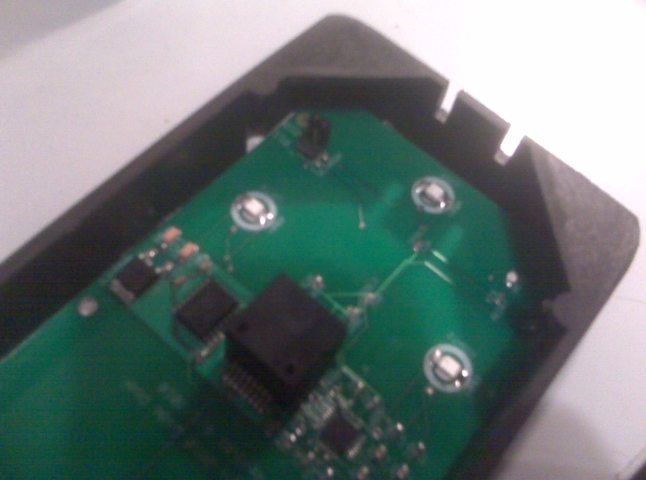Who is a glue expert
Currently I run a giant bead of heat glue around the inside of this enclosure to hold the PCB in place. It needs a good grip, heat glue holds for a short time but will separate after a period of time and is not a good method. The heat glue is very messy and looks bad. I tried crazy glue, it is not great either. A two part epoxy seems to work best but looks really really bad when applying by some stick or other method to spread it in the angle between the PCB and wall. I need some glue that can be placed in a bead with a small tip and have it look very neat and clean. Can anyone suggest a glue that would bond to the PCB (resist coated) and the black ABS or glass filled nylon enclosure shown? It needs to be robust and not easily separate. This enclosure presses inside another receiver part, so some force does get applied to the enclosure when pulling it back out, that is why it needs to be a strong bond.



Comments
Rich H
The type that never gets hard.
I have used it for many purposes
and it seems to really stick well.
It's supposed to stay flexible forever.
It makes nice rubbery feet for project
boards and cases....you let it dry a bit
and then press the case down on a slick
surface to flatten and level the rubbery
globs.
Bean
For prototype, you could also go with a "pastry bag" type application.
Having said that, I'd personally be inclined to go with RTV/Silicone. (RTV = Room Temperature Vulcanizing)
John R.
Rich H
Per my previous post, the best use for the thin CA is to make fillets when gluing thin plates together, in conjunction with sprinking baking soda into the wet CA. Goes exothermic and makes a rock-hard compound. You can quickly build up fillets or make complete PARTS by alternating layers of thin CA and baking soda.
-Phil
Here at work we use Liquid Nails "Perfect Glue." It is silicone-based but entirely odorless. It seems to set-up faster than standard RTV and bonds very well to PCBs and ABS.
(By PCBs I mean printed circuit boards, not polychlorinated biphenols.)
Edit: FWIW, "Perfect Glue" is significantly more fluid out-of-the-tube than is silicone caulk. That may be a benefit or a liability. It certainly makes a smooth surface simple to achieve. As for GOOP, it shrinks as it dries, pulling things together more tightly. That helps in some situations and hinders in others.
Bill M.